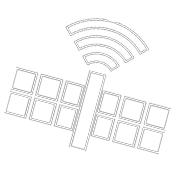- Business card
CEO-TERRA project: a promise for the future of atmospheric science
CEO-TERRA project main objective is to modernize and consolidate what is currently in place through construction and procurement of equipments in order to enable new research directions in the field of Earth observation, increasing the knowledge of the atmospheric science field and also to meet...
Lidar Calibration Centre LICAL
Lidar is not a “push button” device. Even if fully automatic, it requires supervision because its calibration may change with time and environmental conditions. The quality of the final data products depends crucially on the performance of the instrument, operator’s skills and experience, and data handling procedures.Therefore, lidar calibration is a complex process, relying on the quantitative assessment of the instrument’s performance and its continuous control.
Aerosol Remote Sensing Laboratory
The Aerosol Remote Sensing Laboratory in Bucharest is a high-performance ACTRIS-compliant facility specializing in advanced lidar and photometric observations. Operational since 2005, with full quality assurance implemented from 2015, the laboratory provides continuous profiling of aerosol...
Cloud Remote Sensing Laboratory
The Cloud Remote Sensing Laboratory is equipped with a suite of active and passive instruments designed to monitor atmospheric processes related to cloud and precipitation dynamics, boundary layer structure, and wind fields. The instrumentation enables high-resolution profiling of thermodynamic...
Aerosol In Situ Laboratory
The Aerosol In Situ Laboratory is dedicated to the long-term observation of near-surface aerosol properties, both physical and chemical, originating from natural and anthropogenic sources. It plays a central role in understanding pollutant composition and dynamics, particularly focusing on...
Trace Gases Remote Sensing Laboratory
The Trace Gases Remote Sensing Laboratory at RADO-Bucharest hosts a suite of ground-based instruments dedicated to the measurement of atmospheric trace gases and greenhouse gases. Its primary mission is to support satellite validation efforts for Earth Observation missions such as Sentinel-5P,...
Scientific objectives
1. Development and improvement of investigation methods (active and passive remote sensing, laser induced fluorescence, in situ and laboratory) dedicated to environmental assessment (water, soil, air)
2. Experimental and theoretical research for the physical, chemical and optical characterization of environmental components and parameters
Complementary objectives
Remote Sensing Dept. supports education at the Master (M.Sc.), and doctoral (Ph.D.), as well as PostDoc track levels: professional deveopment, career plan, communication skills, project management, team work, secondments, networking.
Mission
The main goal of the Remote Sensing Dept. is to strength the research and technological development capacities and set-up strategic partnerships with excellent research entities worldwide in order to produce and manage information on the environment.
Research interests
Our research provides coverage of the fundamentals, methods and technology, as well as application of laser remote sensing and complementary techniques within environmental domain.
Atmosphere, water and soil are considered as 3-dimensional dynamic systems in continuous interaction, and investigated by use of remote sensing techniques in synergy with other techniques.
